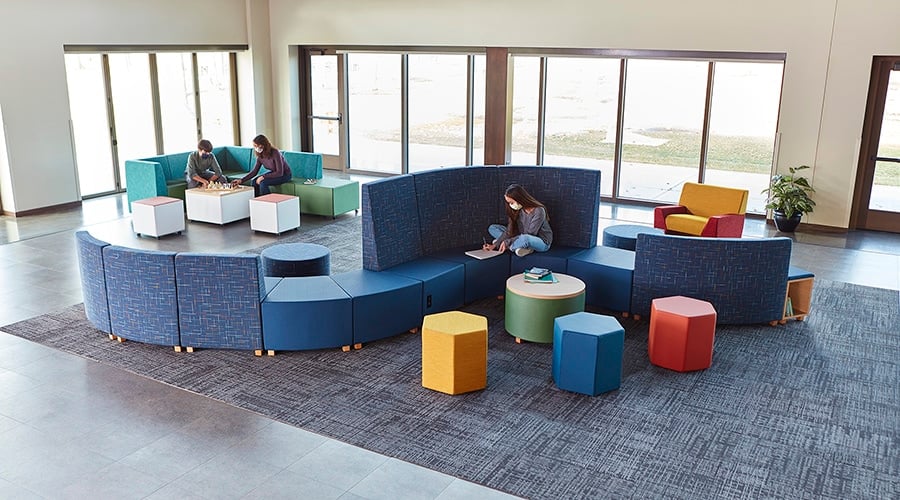Jonathan Matta and I recently had the opportunity to represent KI at this year’s virtual EDspaces conference, the premier event in educational facilities management. We hosted a workshop on how to reimagine learning environments to support what matters most -- the student.
Environmental shifts in the world drive social changes. That’s especially true in education today. Students and teachers are still adjusting to virtual learning and the wealth of social and technological challenges that come with it.
Below, I’ll recap the takeaways from the three questions we posed to breakout groups during our workshop:
- How might technology increase equity and access?
- How might flexibility go beyond furniture?
- How might active forms of instruction apply to virtual delivery models?
Technology as an Equalizer
This year, we’ve seen firsthand how virtual learning can exacerbate educational inequities. Our participants noted that students may struggle if they don’t have reliable internet access or have to share computer time with siblings or parents.
Further, not every student is fortunate enough to have a parent working from home to support virtual learning.
But our participants agreed that technology can also be an equalizer -- by allowing for personalized education. One attendee told us about how Guilford County Schools in North Carolina harnessed artificial intelligence to individualize learning to each student’s preferences. “AI is the platform, and the teacher is the pilot,” one event attendee told us.
What does AI in schools look like? It varies, but one example might be a “smart” study guide -- a program that breaks down textbooks into flashcards and practice tests so that students may digest and study the material according to their preferences.
Flexibility Extends Beyond the Classroom
When we asked participants to consider how flexibility goes beyond furniture, they honed in on how virtual learning challenges educators to rethink the physical classroom setup. For decades, school spaces have been limited to specific uses. The gym was for physical education, the cafeteria was for lunch, the classrooms were for math and English and so on.
Virtual learning obviously eschews those boundaries. No longer are students tied to a specific physical space to explore a specific discipline.
It’s unlikely that 30 students will be able to safely fit inside a classroom anytime soon. But we can perhaps split into three groups of 10 that rotate among the classroom, the outdoors and the gymnasium for different projects at each location. Such a plan also ensures that students will move more throughout the day -- something key for both learning and health.
Participants in our workshop relayed how they were much more comfortable using technology to expand the reach of the classroom. Virtual field trips, which may have once seemed far-fetched, may become commonplace post-pandemic.
Active Learning Is Essential for Virtual School
Many educators know how to facilitate active learning in person. Doing so through a computer screen is quite a bit tougher.
Fortunately, virtual school lends itself to project-based learning. And that can get kids up and moving at home.
Jonathan and I explored the concept of project-based learning in real life, or “PBL-IRL,” with our workshop participants. PBL-IRL allows students to use what they have at home to engage in active learning.
For example, students could study animal behavior by monitoring their pets’ eating habits -- and tabulating the data away from the computer screen. In the age of Zoom fatigue, taking a break from the computer to actively engage with the real world is more important than ever for our children.
Key Takeaways
Virtual learning has been an adjustment for both students and teachers. But it has also challenged those of us in education to reimagine the ways we’ve previously thought about teaching -- and to construct a new system of learning in which the student is truly at the center.

